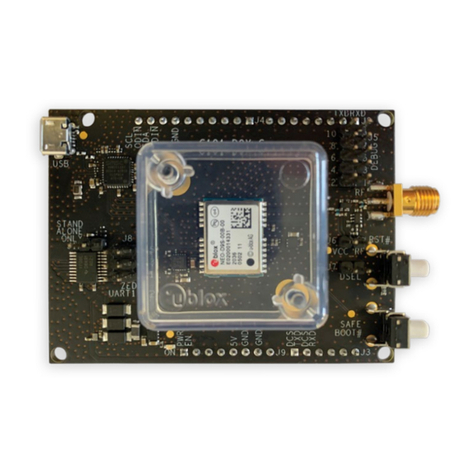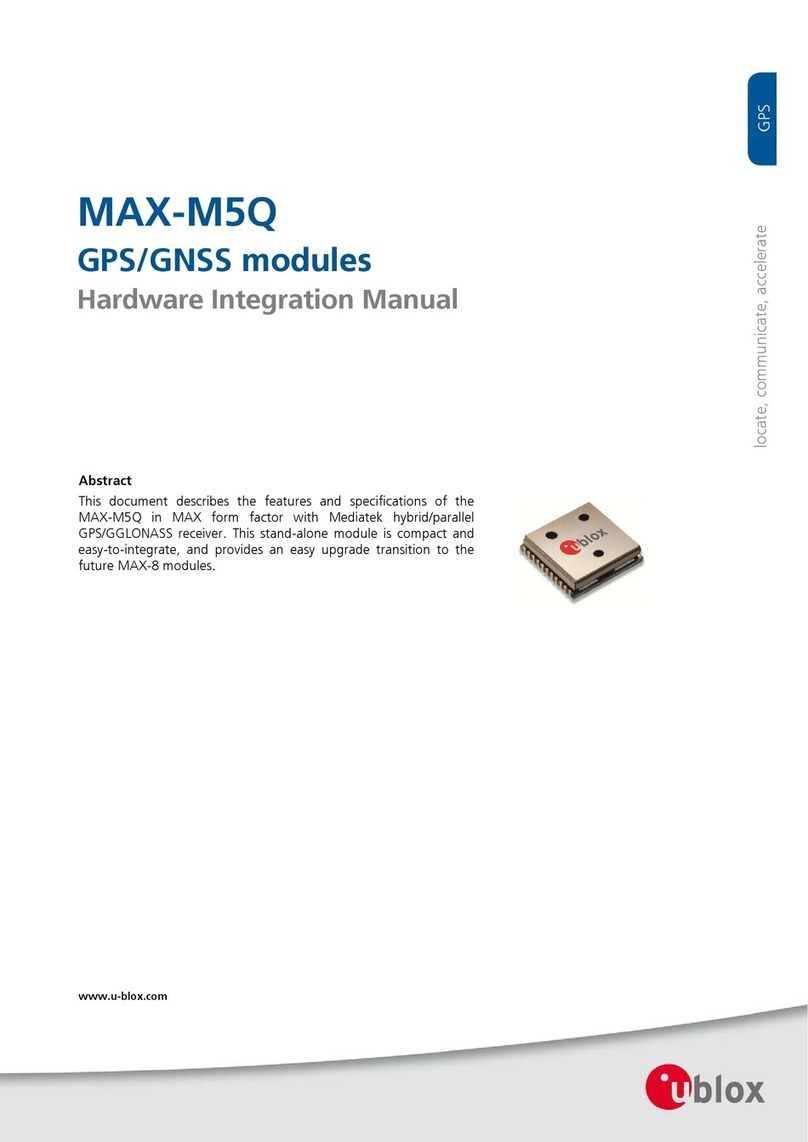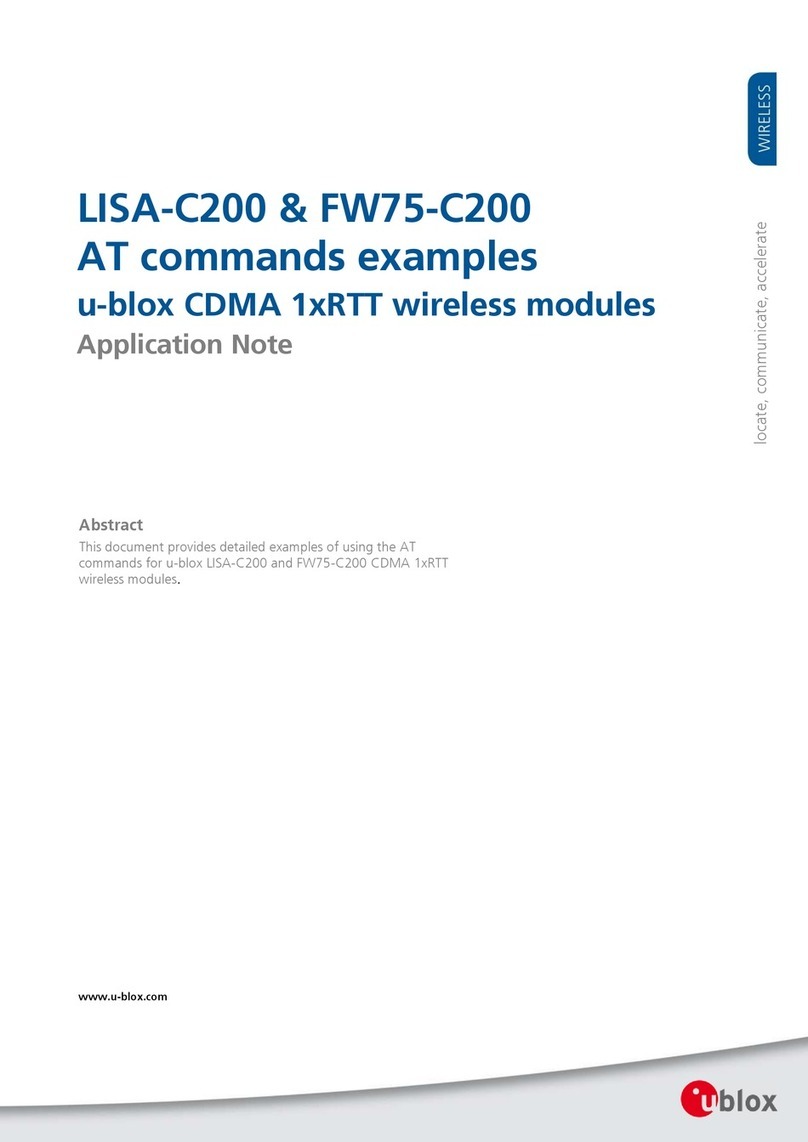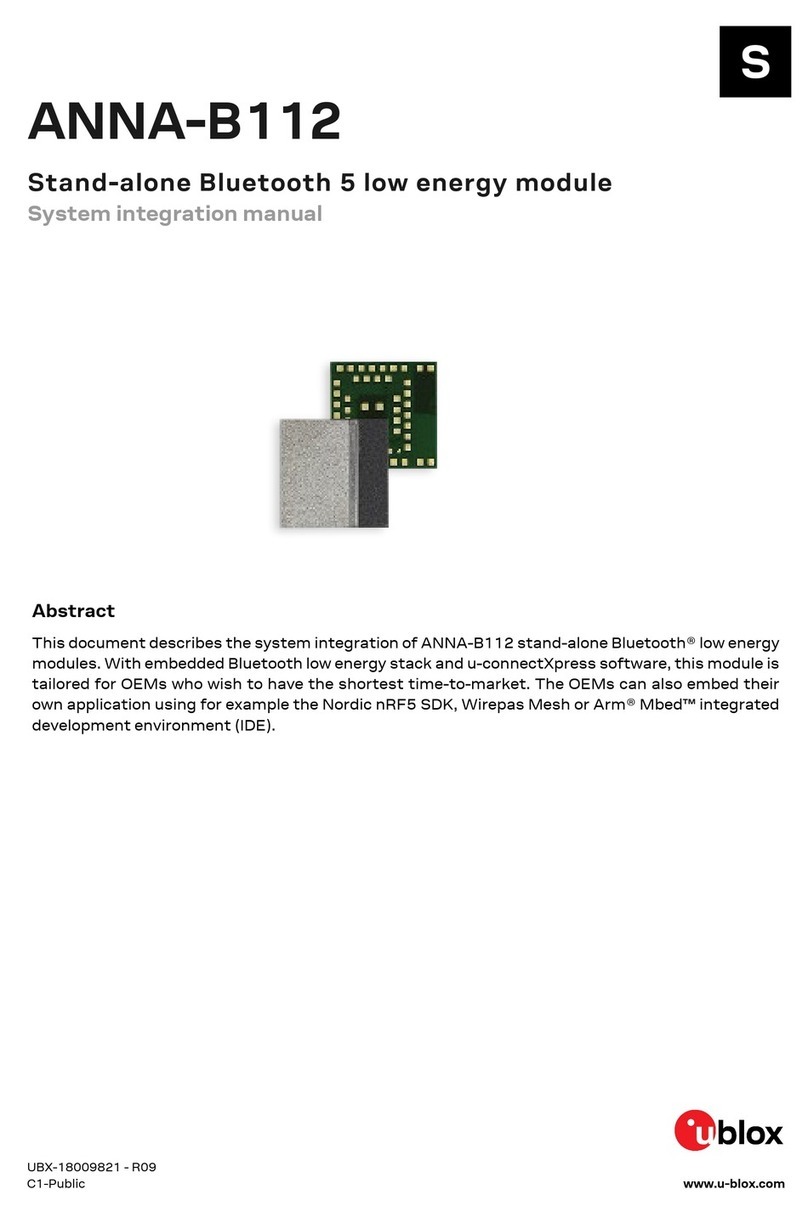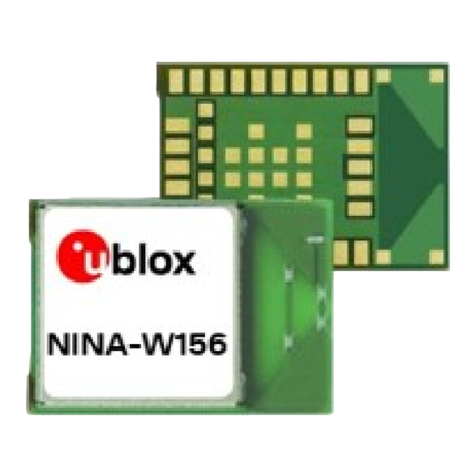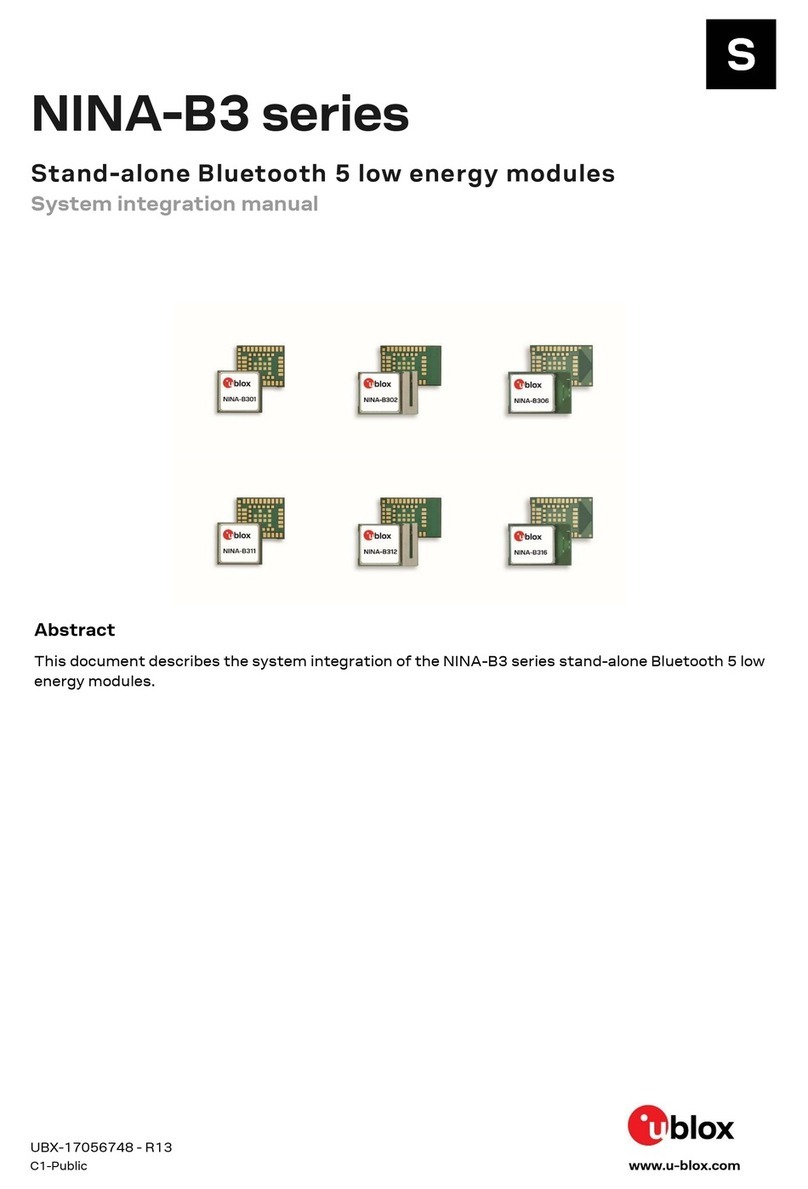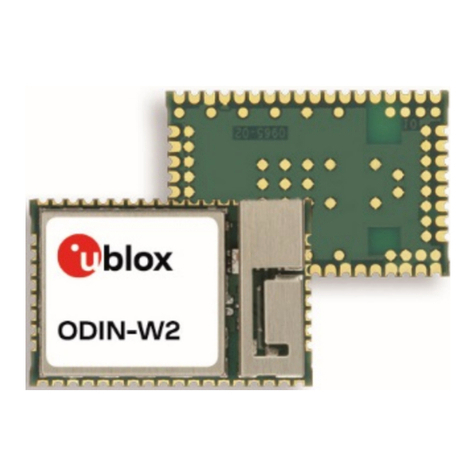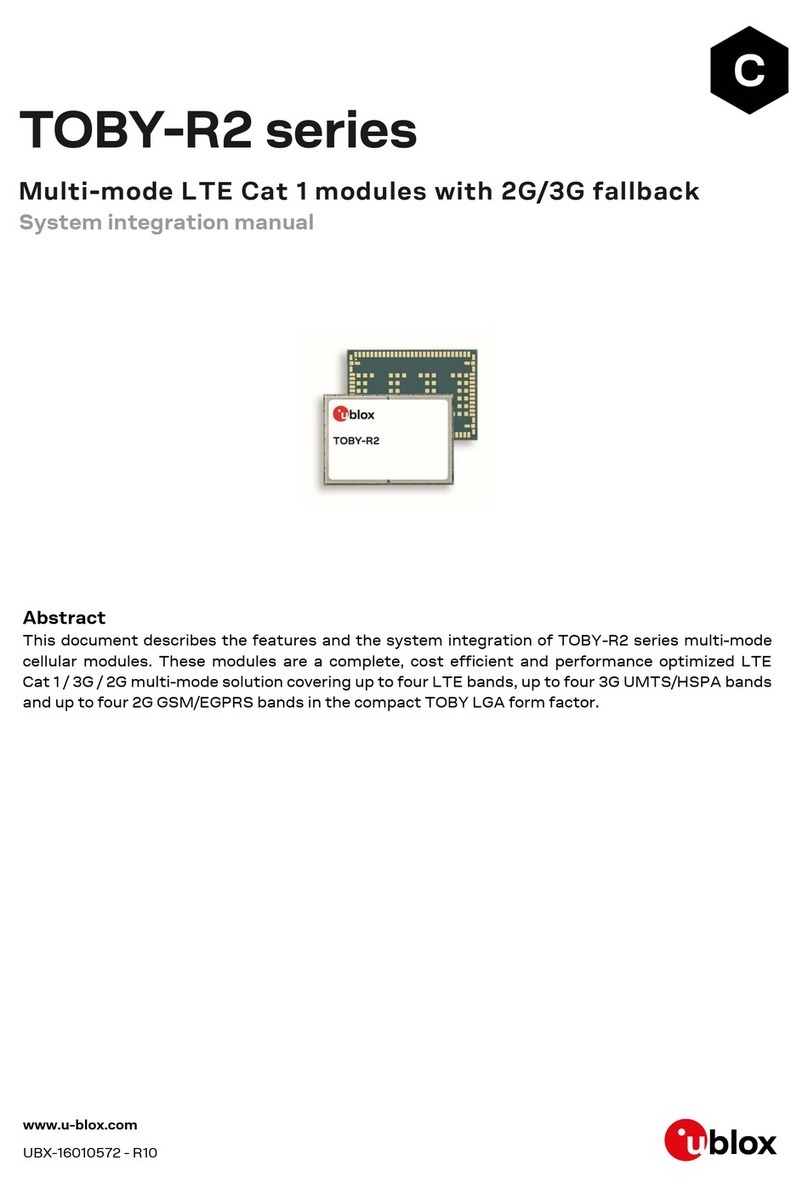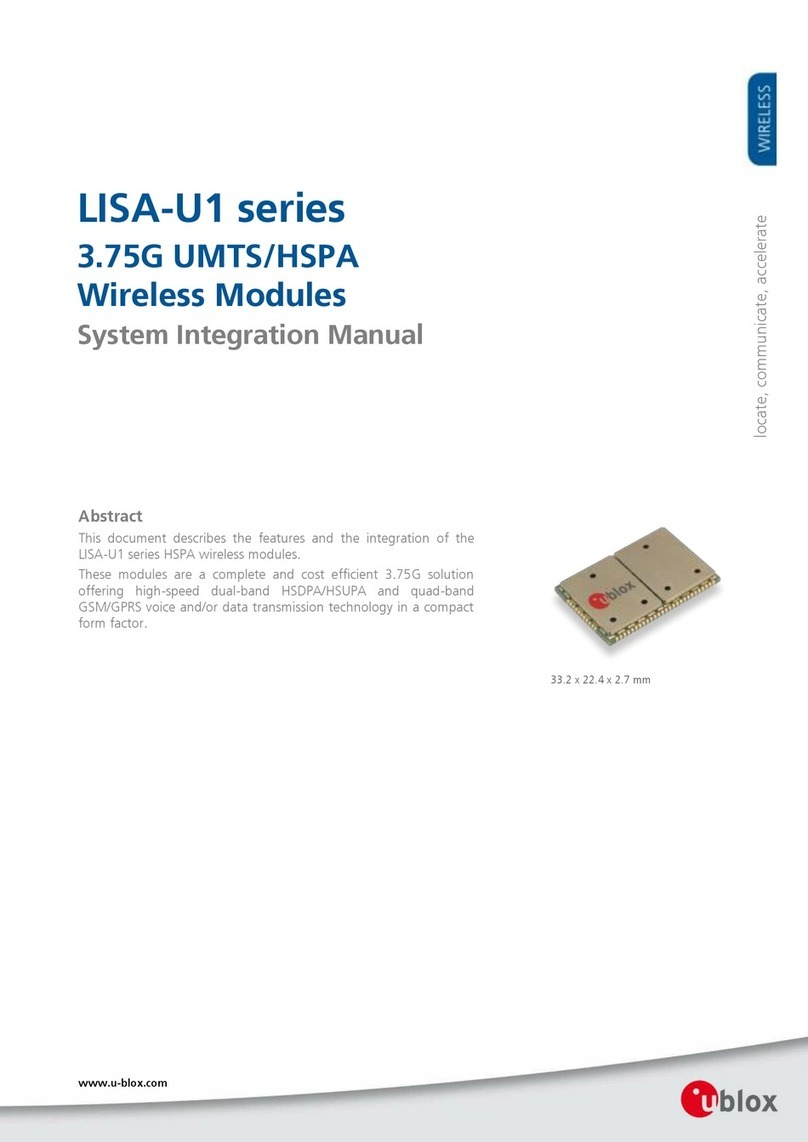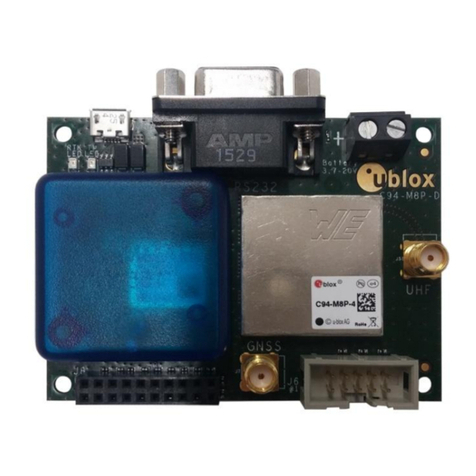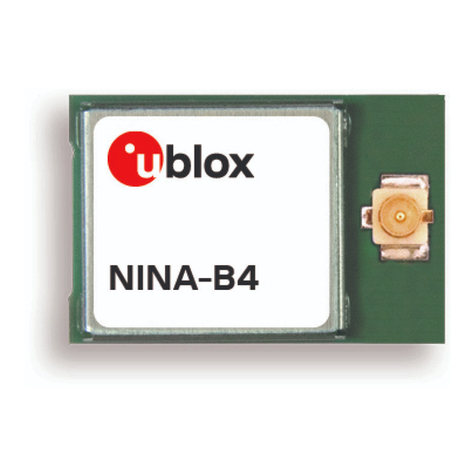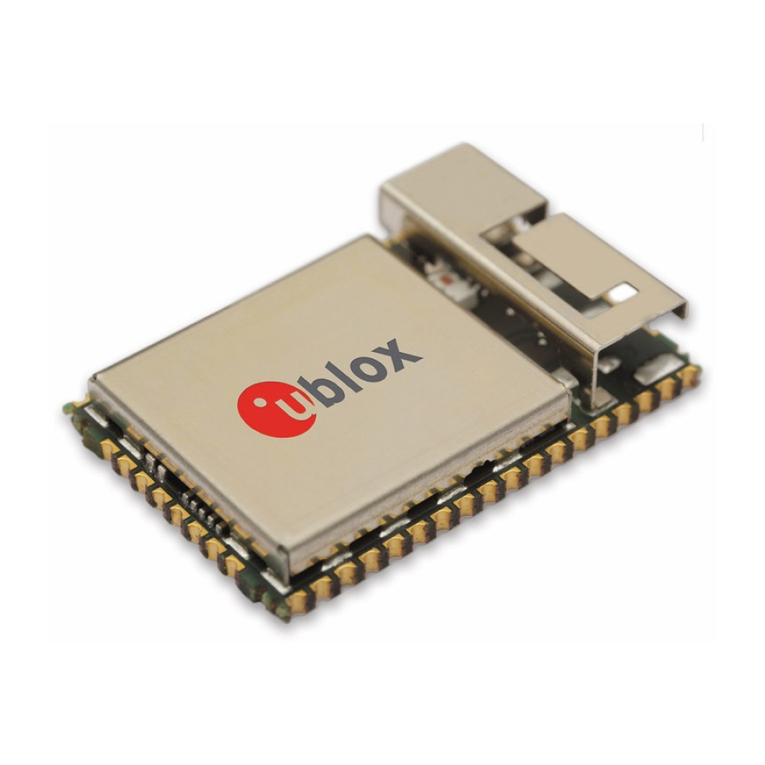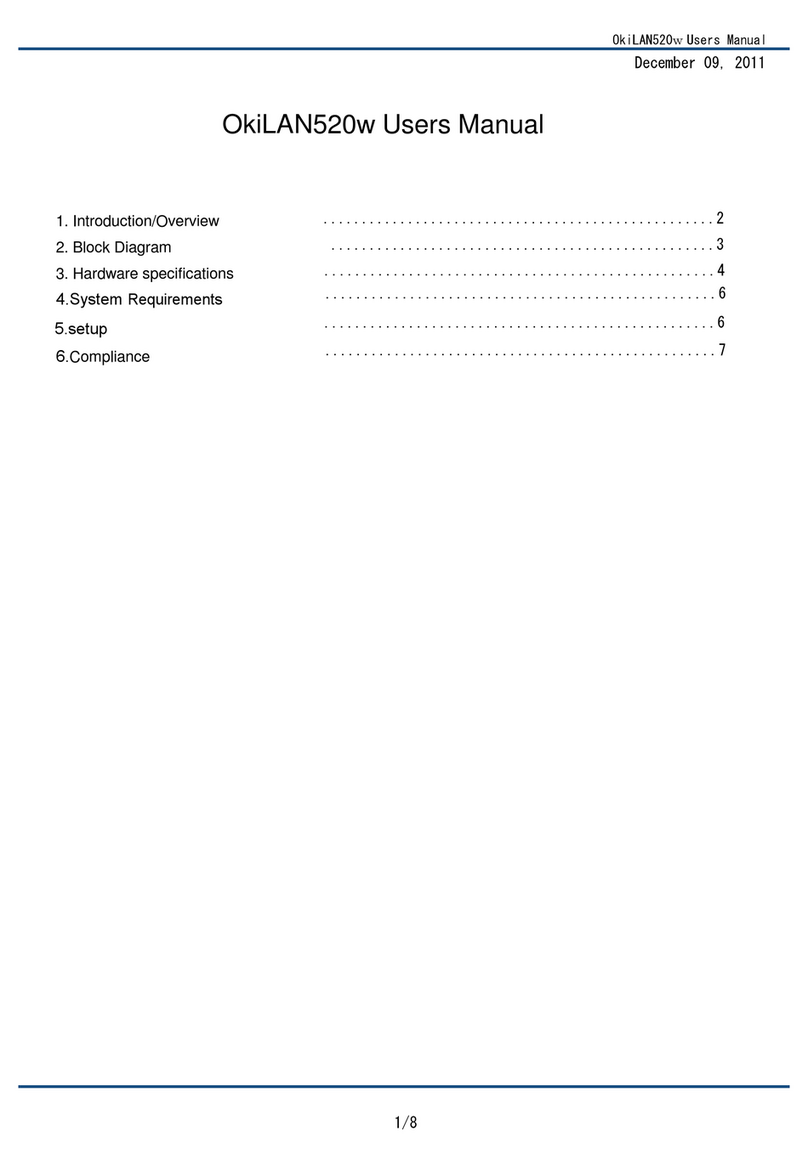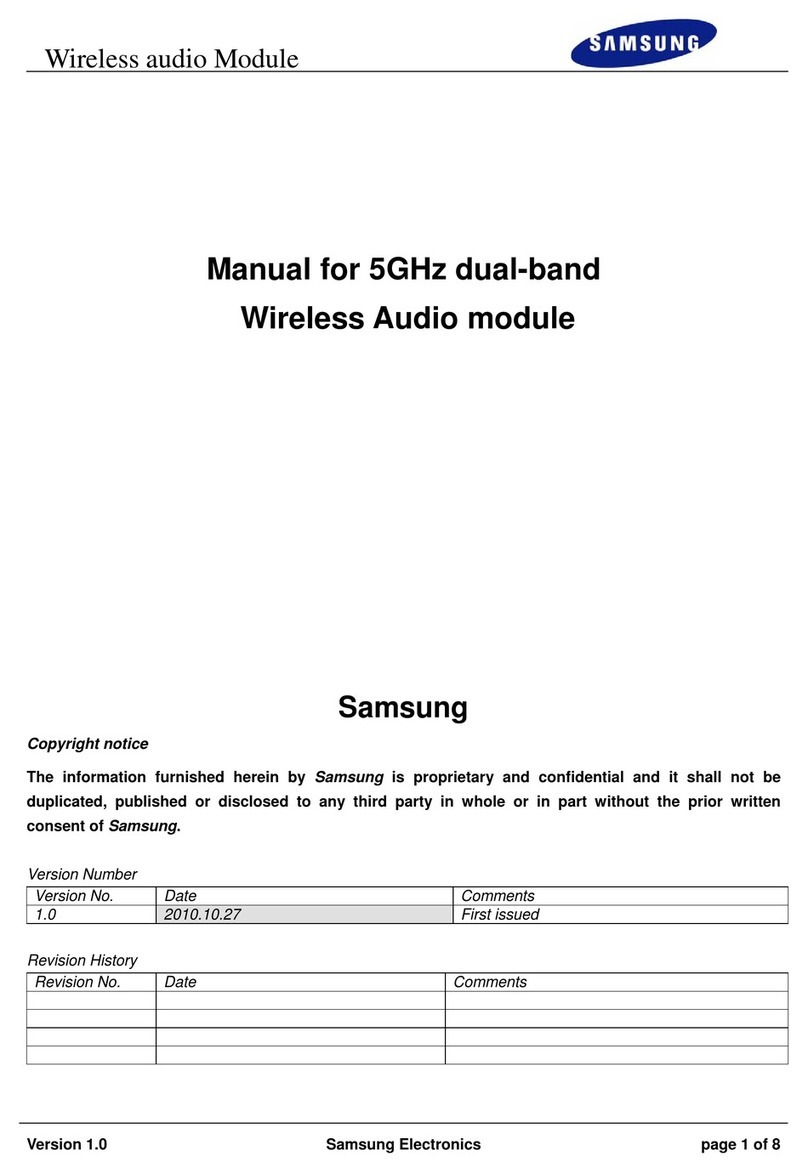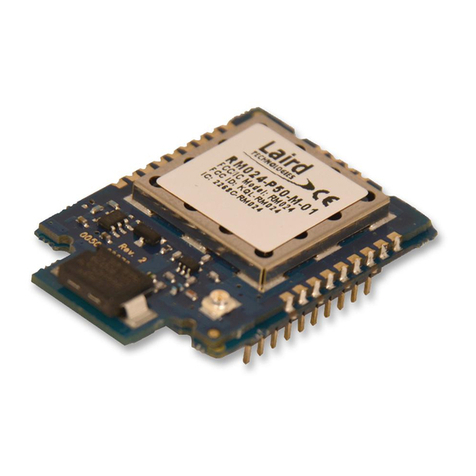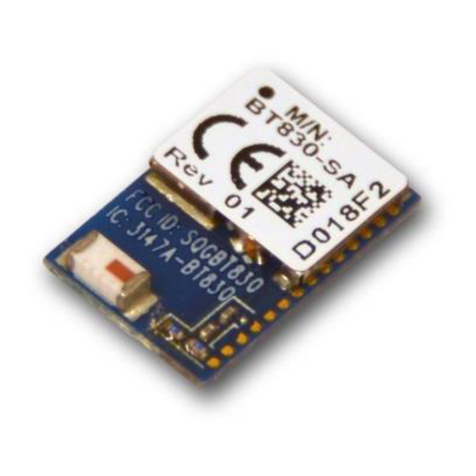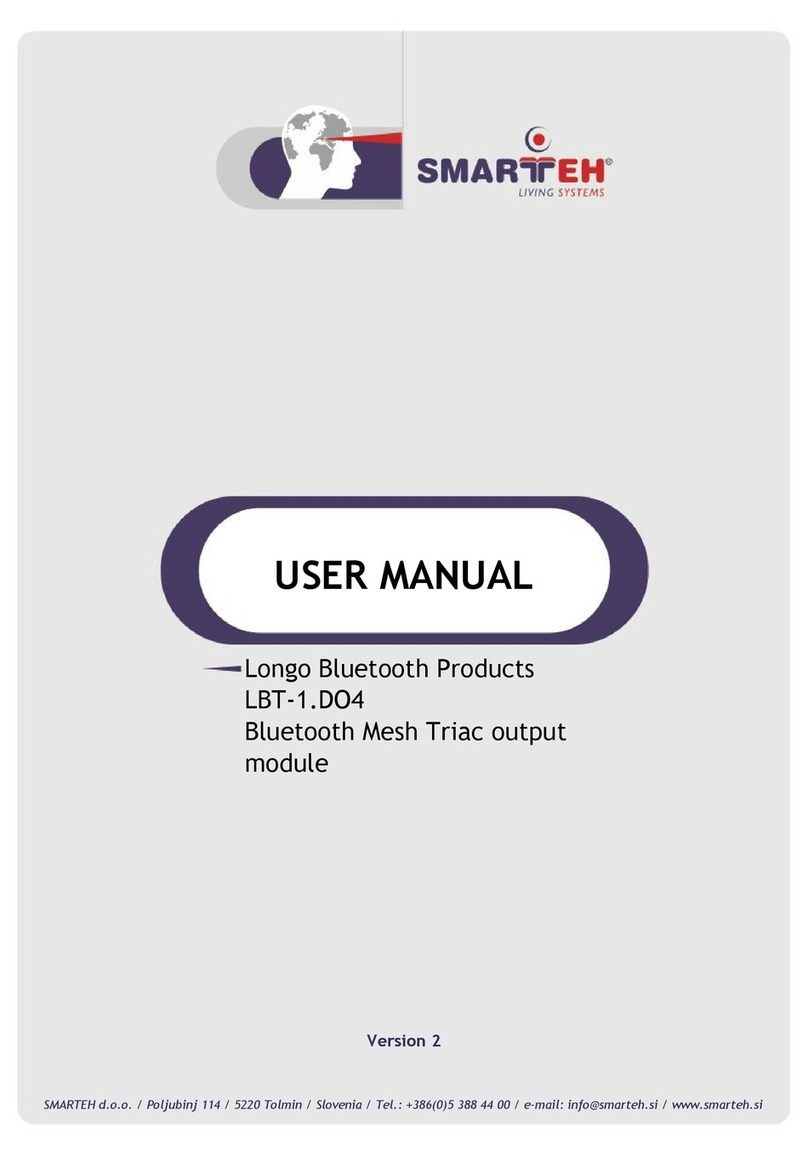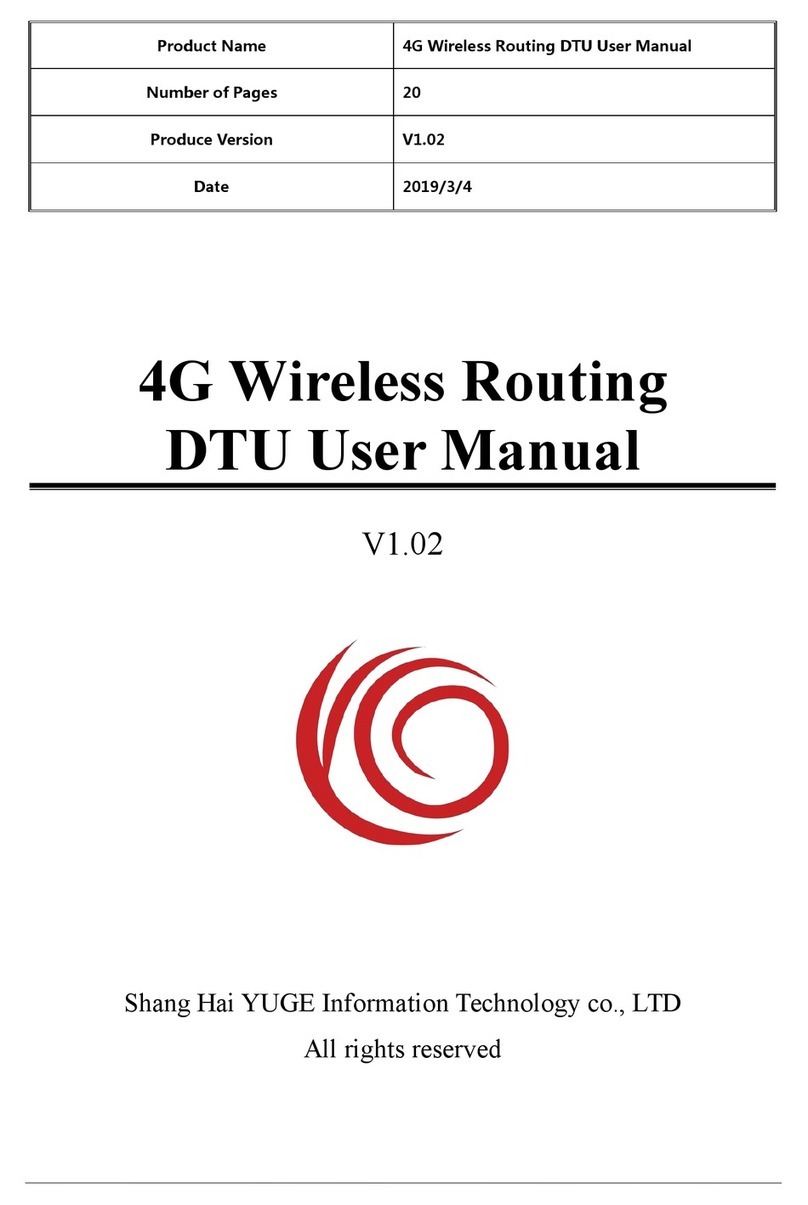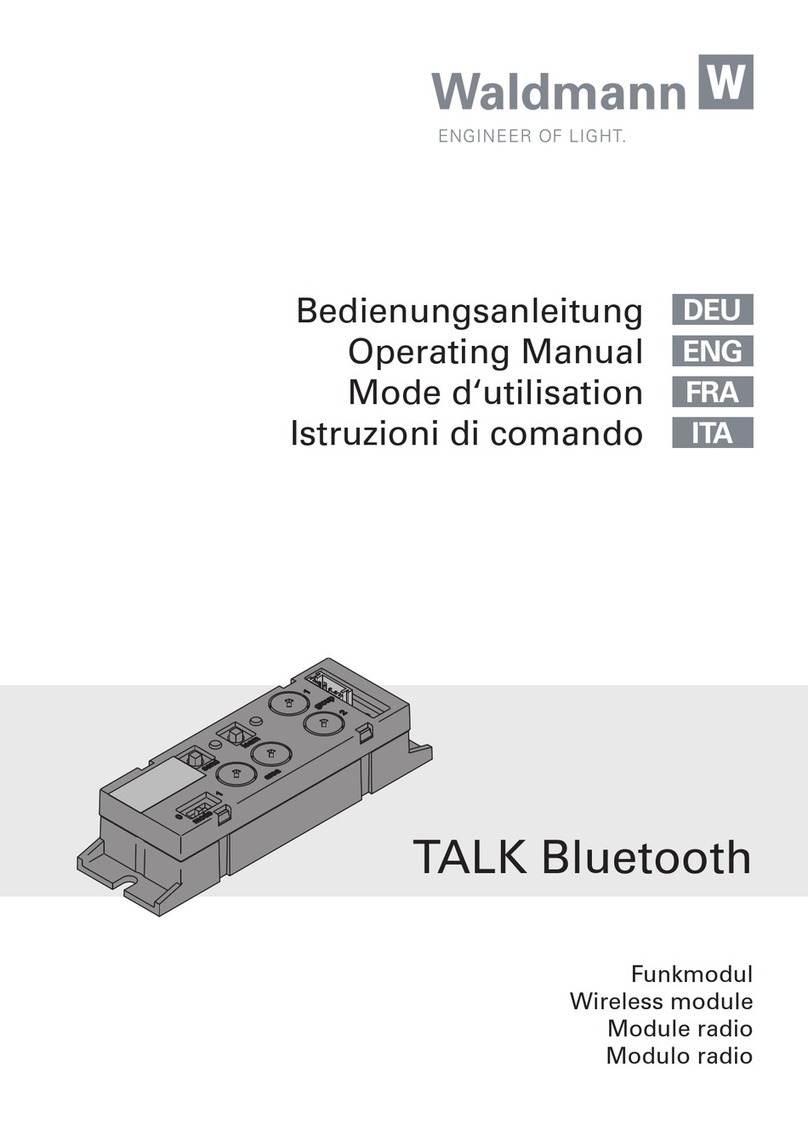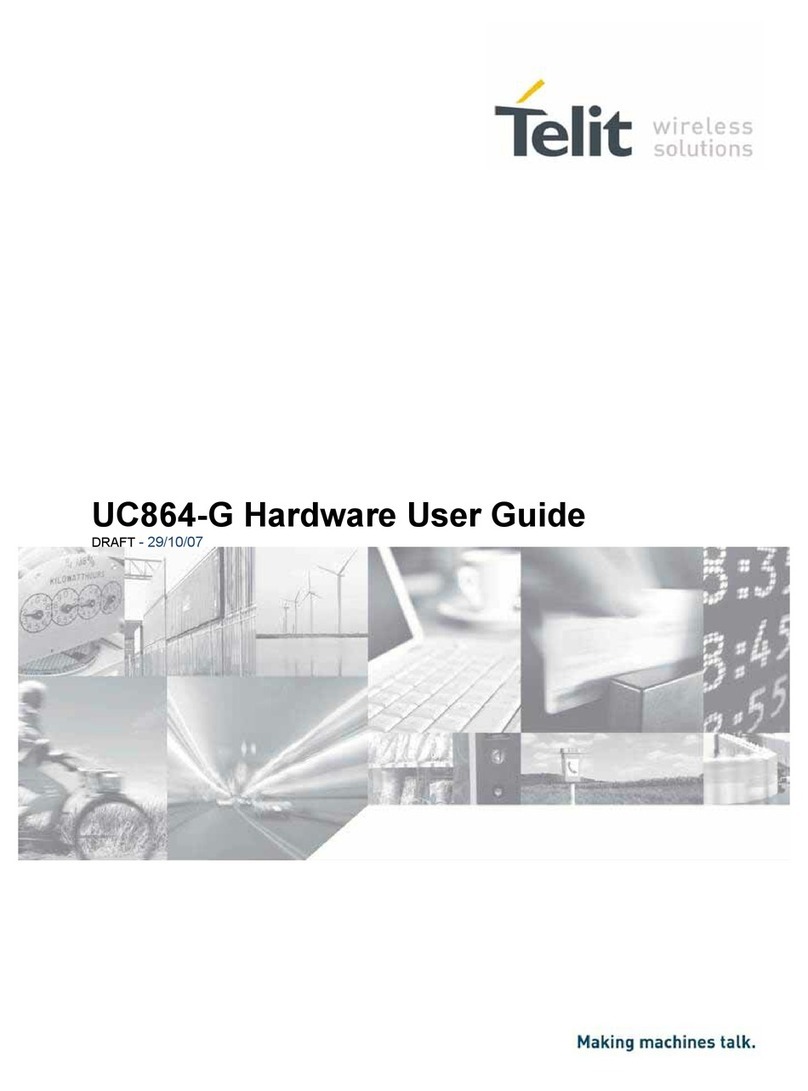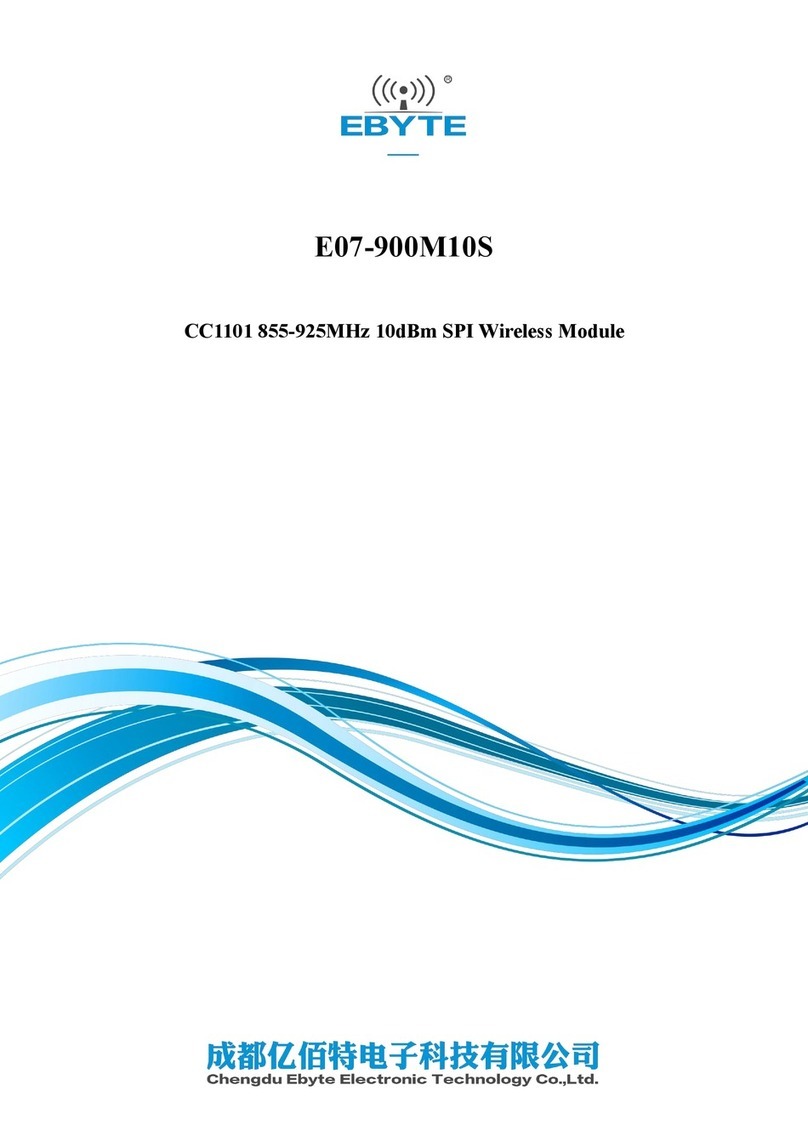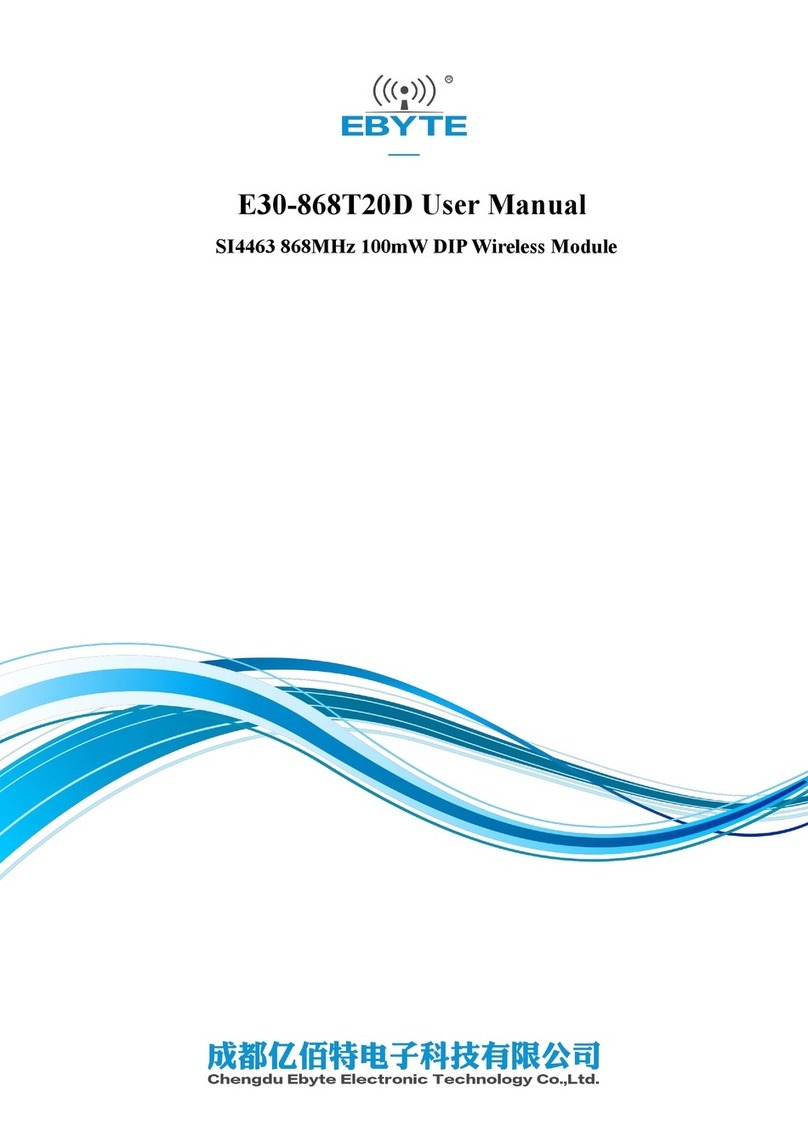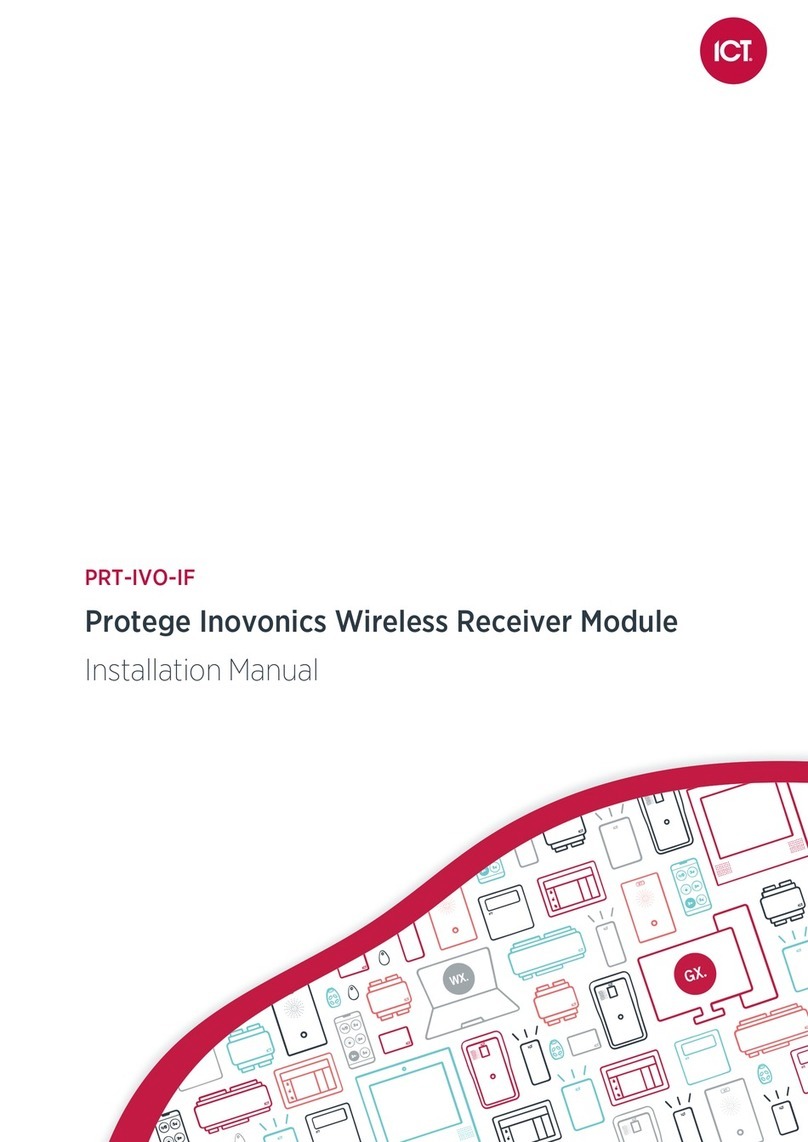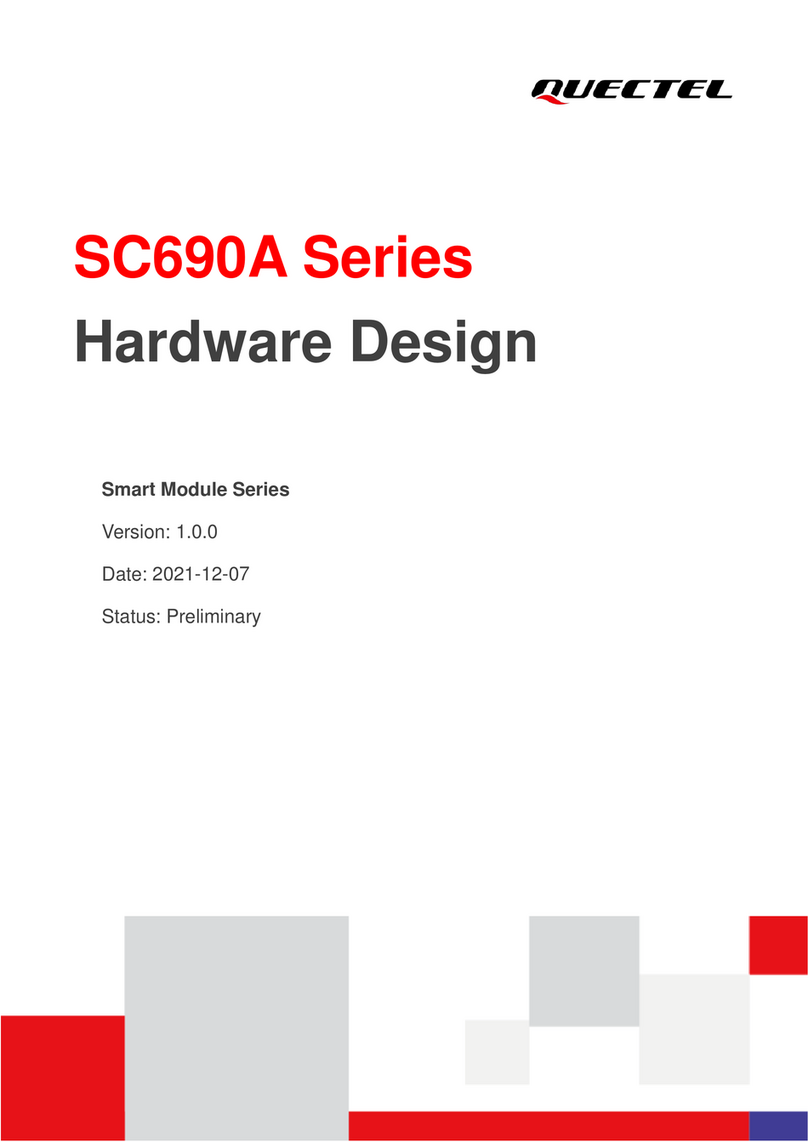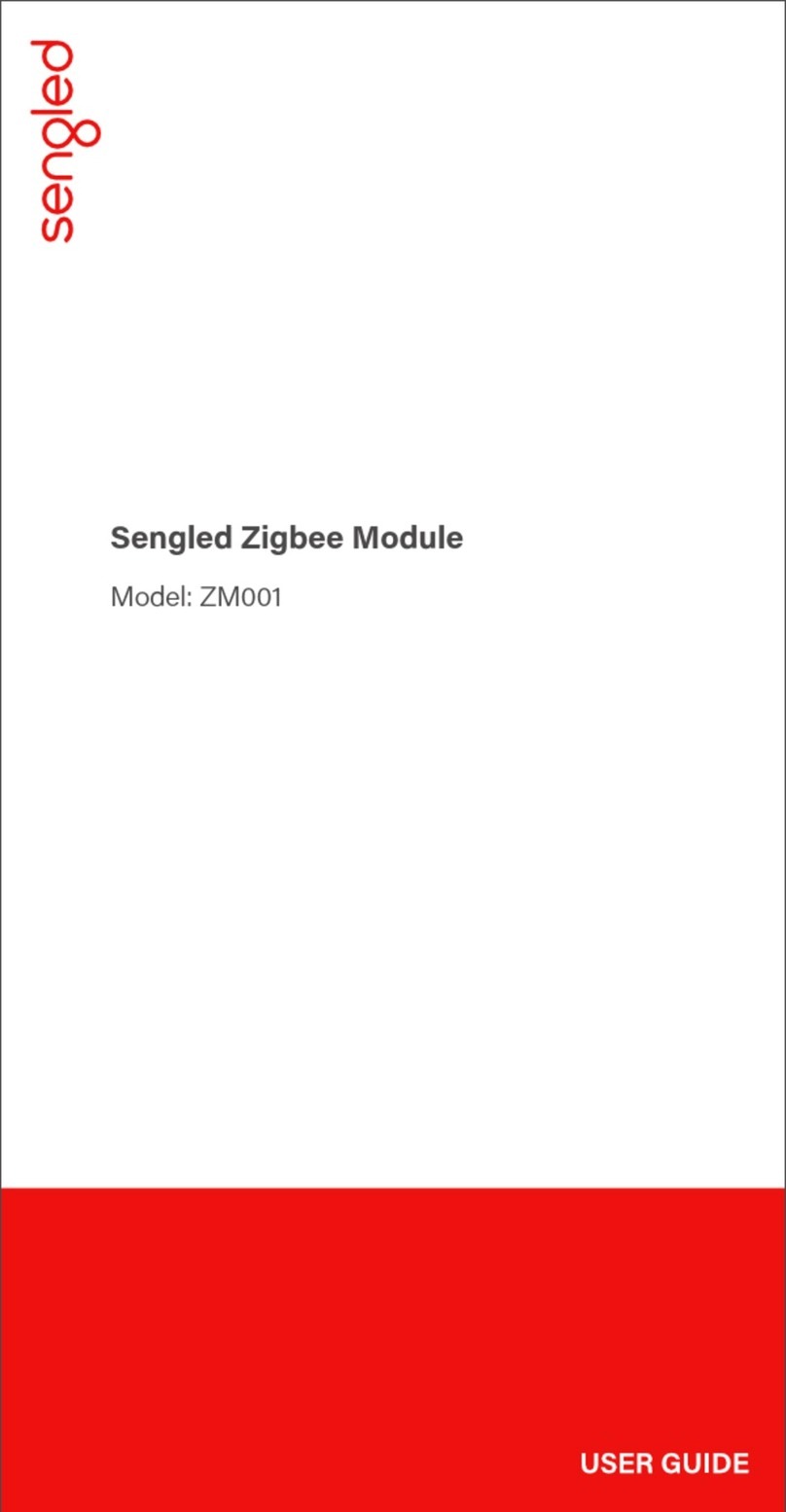LEON-G100 / LEON-G200 - System Integration Manual
GSM.G1-HW-09002-G3 Preliminary Contents
Page 5 of 125
2.1 Design-in checklist .............................................................................................................................. 83
2.1.1 Schematic checklist ..................................................................................................................... 83
2.1.2 Layout checklist ........................................................................................................................... 83
2.1.3 Antenna checklist ........................................................................................................................ 84
2.2 Design Guidelines for Layout .............................................................................................................. 84
2.2.1 Layout guidelines per pin function............................................................................................... 84
2.2.2 Footprint and paste mask ............................................................................................................ 90
2.2.3 Placement ................................................................................................................................... 92
2.3 Module thermal resistance.................................................................................................................. 92
2.4 Antenna guidelines............................................................................................................................. 93
2.4.1 Antenna termination ................................................................................................................... 94
2.4.2 Antenna radiation ....................................................................................................................... 95
2.4.3 Antenna detection functionality .................................................................................................. 97
2.5 ESD Immunity Test Precautions ........................................................................................................... 99
2.5.1 General precautions .................................................................................................................. 100
2.5.2 Antenna interface precautions................................................................................................... 102
2.5.3 Module interfaces precautions................................................................................................... 103
3Feature description ..................................................................................................104
3.1 Firmware (upgrade) Over The Air (FOTA) (LEON-G200 only).............................................................. 104
3.2 Firmware (upgrade) Over AT (FOAT) ................................................................................................. 104
3.2.1 Overview ................................................................................................................................... 104
3.2.2 FOAT procedure ........................................................................................................................ 104
3.3 Firewall............................................................................................................................................. 104
3.4 TCP/IP............................................................................................................................................... 104
3.4.1 Multiple IP addresses and sockets .............................................................................................. 104
3.5 FTP ................................................................................................................................................... 105
3.6 HTTP................................................................................................................................................. 105
3.7 SMTP................................................................................................................................................ 105
3.8 GPS .................................................................................................................................................. 105
3.9 Jamming detection ........................................................................................................................... 105
3.10 Smart Temperature Management ................................................................................................. 106
3.10.1 Smart Temperature Supervisor (STS) .......................................................................................... 106
3.10.2 Threshold Definitions................................................................................................................. 108
3.11 Hybrid positioning and CellLocateTM .............................................................................................. 108
3.11.1 Positioning through cellular information: CellLocateTM ............................................................... 108
3.11.2 Hybrid positioning ..................................................................................................................... 110
4Handling and soldering ...........................................................................................111
4.1 Packaging, shipping, storage and moisture preconditioning ............................................................. 111
4.2 Soldering .......................................................................................................................................... 111
4.2.1 Soldering paste.......................................................................................................................... 111
4.2.2 Reflow soldering ....................................................................................................................... 111
4.2.3 Optical inspection...................................................................................................................... 113
4.2.4 Cleaning.................................................................................................................................... 113
